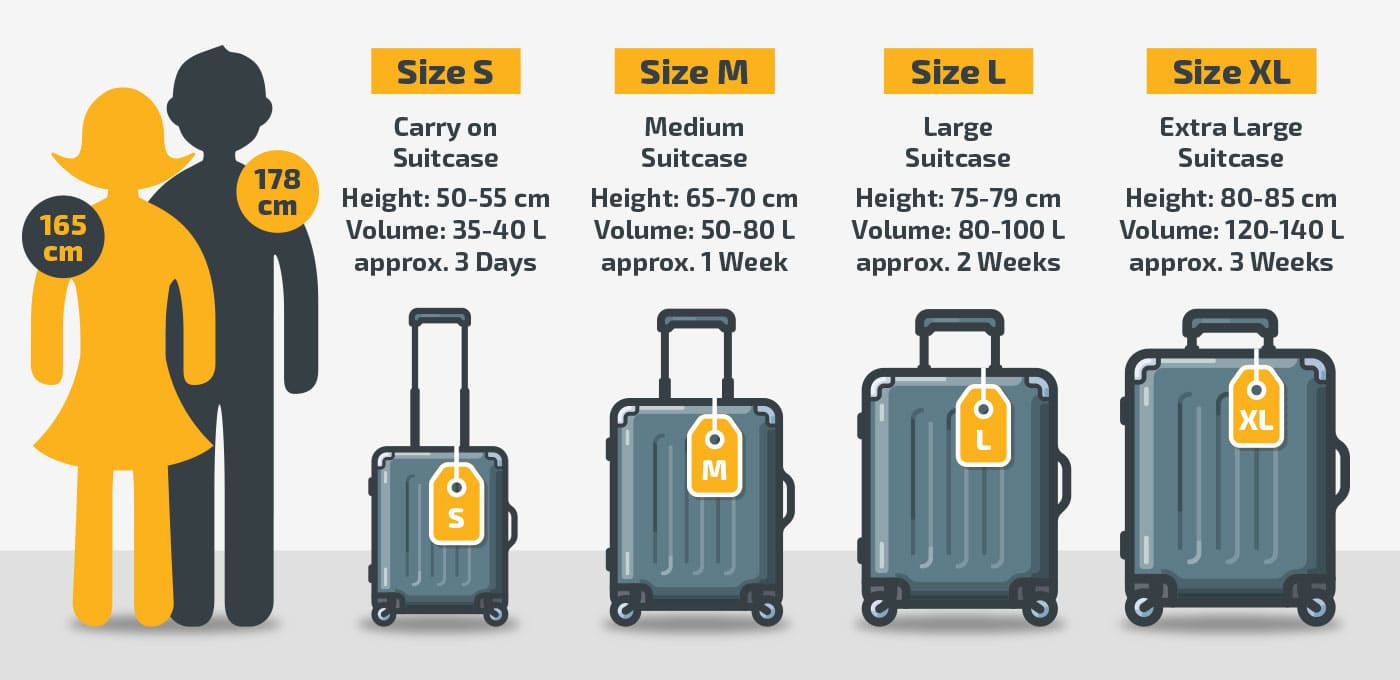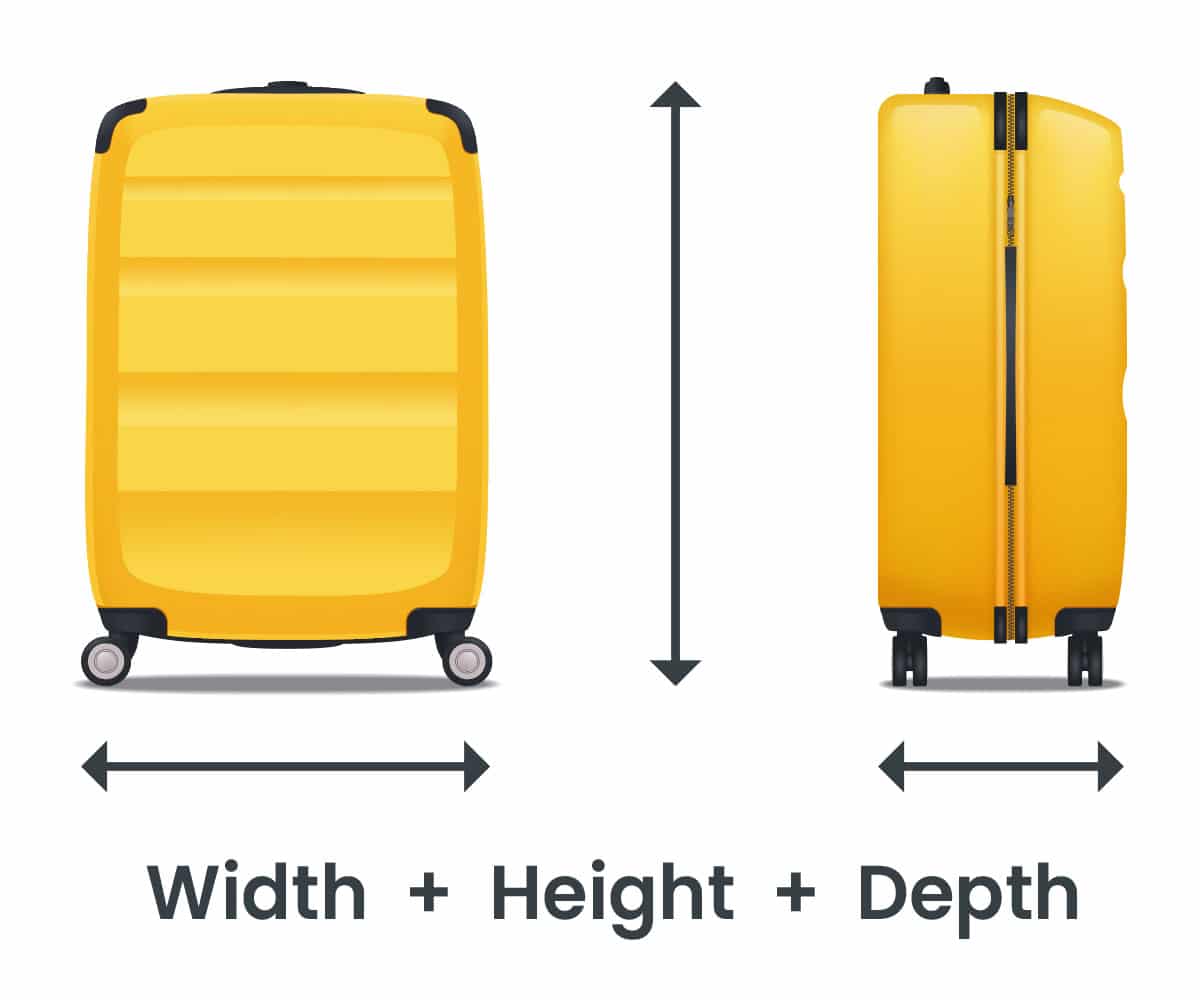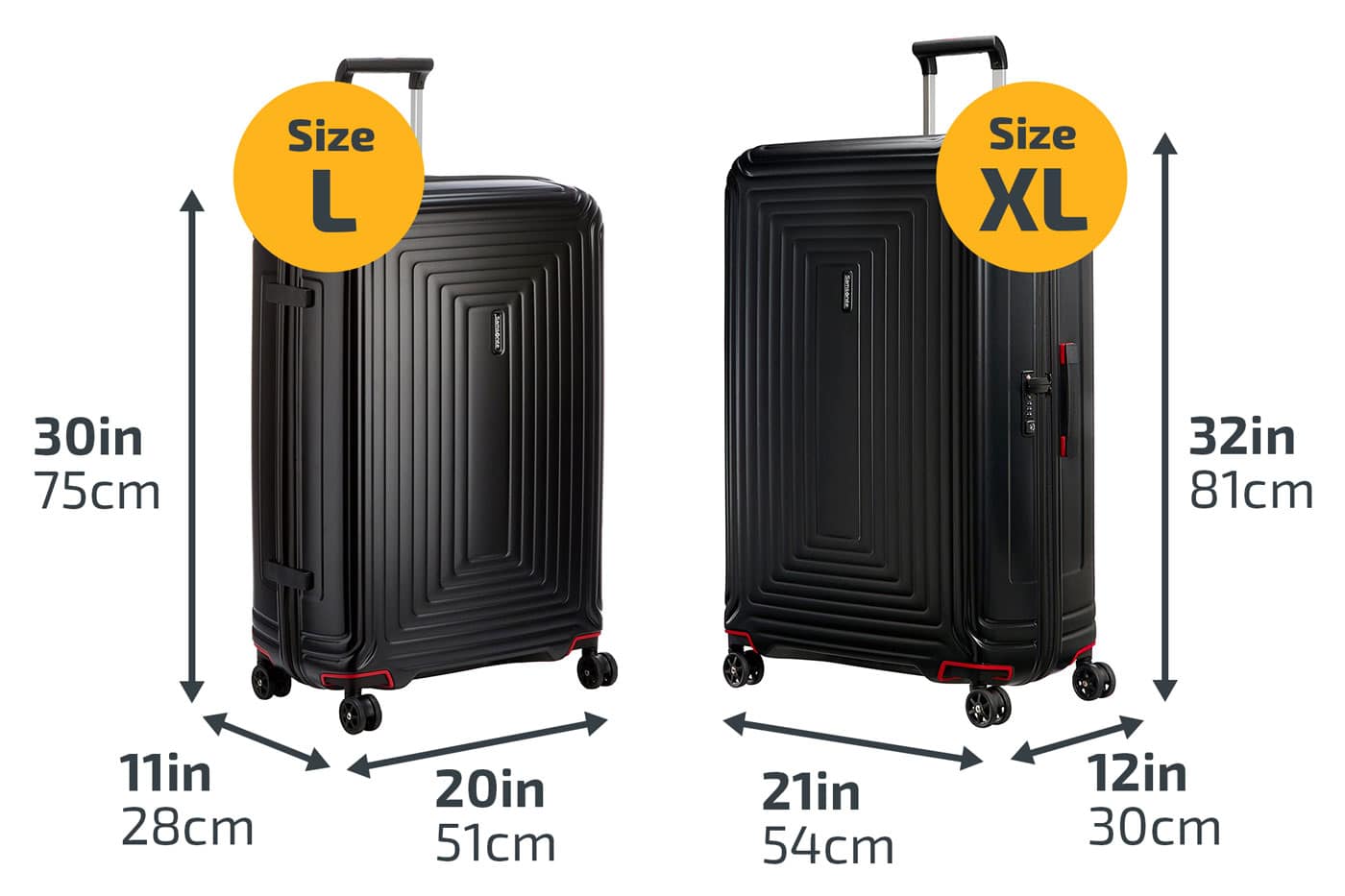
Choosing the right suitcase size can feel overwhelming with so many options available. That’s why I’ve created this handy overview of the 4 standard suitcase sizes to guide you in making the best choice. Plus, at the end of the article, you’ll find answers to frequently asked questions. Have a specific question? Feel free to ask it in the comments!
About the author
My name is Sebastian and I write about luggage since 2017. I am always on the hunt for the best suitcases.
Suitcase Size Guide
There are 4 average suitcase sizes:

Because suitcase sizes aren’t standardised, I compared the dimensions of the most popular models to determine average values. The sizes provided are meant as a guide and may vary slightly.
The recommended suitcase size can vary significantly depending on the type of trip and your personal preferences. For a week-long beach holiday, a medium-sized (M) suitcase should be more than sufficient. However, for a one-week ski trip, a large (L) suitcase might be the better choice.
When selecting the right suitcase size, consider whether you’re a minimalist traveller or prefer to pack a little extra for added comfort.
An overview of the suitcase sizes
Average use of the different sizes

Size S – Carry-on Suitcase
The suitcase size S is ideal for short trips of up to 3 days. Personally, I use this size for summer trips of up to 5 days, paired with a backpack for extra storage. Suitcases of this size are permitted as carry-on luggage by most airlines, making them a popular choice for travellers.
This is why size S is often referred to as hand luggage. However, the allowed dimensions can vary between airlines and are typically around 55x40x20 cm.

Size M – Small Checked Luggage
The suitcase size M is commonly referred to as small checked luggage. Suitcases in this category must be checked in when travelling by plane. This size is ideal for trips of around one week. For minimalists or trips requiring less luggage, such as a beach holiday, a size M suitcase can even suffice for up to two weeks.

Size L – Large Checked Luggage
The suitcase size L also needs to be checked in when travelling by plane. This size is perfect for trips of around two weeks. Depending on your travel style and the type of trip, a size L suitcase can comfortably accommodate luggage for up to three weeks or even longer.

Size XL – Extra Large Suitcase
The suitcase size XL is ideal for longer trips of 2 to 3 weeks. However, for air travel, this size is only partially suitable. Most airlines consider it oversized, meaning it cannot be checked in as standard luggage. Instead, it is classified as bulky luggage, which may incur additional fees.
For more details on size limits and airline policies, see: 62 inch Luggage.
62 inch Luggage
158cm – Maximum Dimensions of Checked Luggage

The 62-inch rule is a standard suitcase size limit for checked luggage with many international airlines. It means that the total dimensions (width + height + depth) of your suitcase must not exceed 62 inches or 158 cm. These two measurements are identical – 62 inches is exactly equivalent to 158 cm. Airlines use this rule to ensure that suitcases fit easily in cargo holds and are manageable for handling.
62 inch Luggage – How to Measure?
Width + height + depth = 62 inches (158 cm)
The maximum permitted suitcase size varies between airlines, so it’s essential to check the specific regulations of your airline before you travel.
Calculating Suitcase Size – An Example
Let’s say you’re looking for the largest possible suitcase and have decided on my top pick, the Samsonite Neopulse. To comply with the 158 cm rule, you’re torn between sizes L and XL. The two models have the following dimensions:

Size L (75) measures 75x51x28 cm. The combined dimensions are:
30 + 20 + 11 = 61 in (75 + 51 + 28 = 154 cm)
Size XL (81) measures 81x54x30 cm. The combined dimensions are:
32 + 21 + 12 = 65 in (81 + 54 + 30 = 165 cm)
Result: While the size L meets airline regulations for checked luggage, the size XL is slightly larger and could be classified as oversized baggage, potentially incurring additional fees.
Important: Always include wheels and handles when measuring your suitcase!
FAQ
Frequently asked questions about suitcase sizes
What is the size of 23kg luggage bag?
A suitcase of size M (50 – 80 litres) or size L (80 – 100 litres) is suitable for 23 kg of luggage. The right size depends on whether you plan to pack many light items or a few heavy ones. For maximizing the weight limit of 23 kg, particularly for trips lasting 2 to 3 weeks, I recommend choosing the large size (Size L).
What size of suitcase do I need for 1 week?
For a journey of 1 week, a size M suitcase is usually sufficient. This suitcase size has a volume of around 50 to 80 litres. If you have to take a lot of luggage with you (e.g. on a winter holiday) the size L with approx. 80 to 100 litres can also be worthwhile.
What size of suitcase do I need for 2 weeks?
For a trip of 2 weeks, I recommend suitcase size L. Suitcases of this size usually have a volume of around 80 to 100 litres. Even larger suitcases usually exceed the 158 cm rule (see above) and are therefore too large for many airlines and cannot be checked in without additional charges.
What size suitcase is a carry-on?
There are no standard rules for the size of hand luggage. Each airline determines the dimensions and weight of hand luggage individually. The unofficial standard is the size of 55x40x20 cm. Suitcases of this size can be taken on board with almost all airlines.
Is a carry-on enough for 2 weeks?
I would say no. A carry-on suitcase is more intended for short trips of a maximum of 3 to 5 days. Only if you need very little luggage and perhaps have the opportunity to do laundry at the destination, then a carry-on suitcase can be sufficient.
What is the maximum weight for a suitcase on an airplane?
Unfortunately, there are no uniform regulations on how much a suitcase can weigh on an airplane. The allowed weight depends on the airline and the booked fare. The following information is for guidance:
- Normal baggage must not weigh more than 32 kg. Heavier luggage must be transported as cargo.
- Most airlines allow checked baggage to weigh a maximum of 20 to 23 kg. Baggage up to 32 kg can be checked in on higher-priced fares.
- Hand luggage can usually weigh between 6 and 10 kg.



